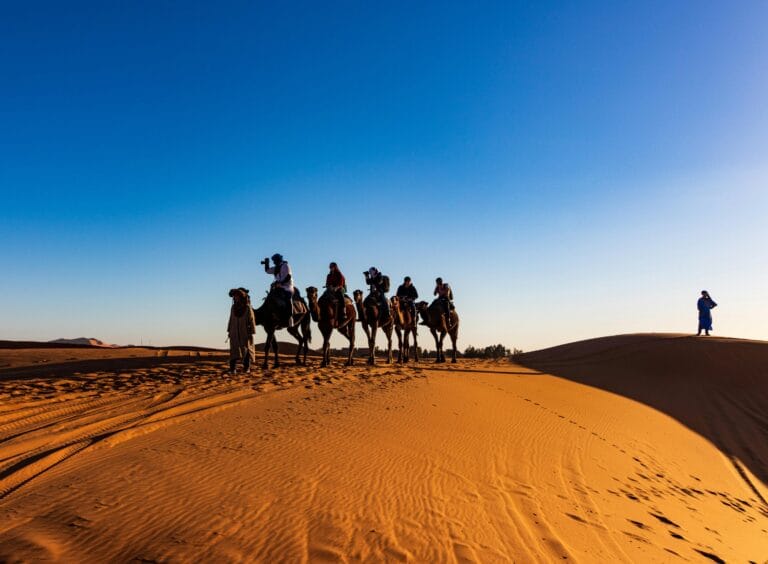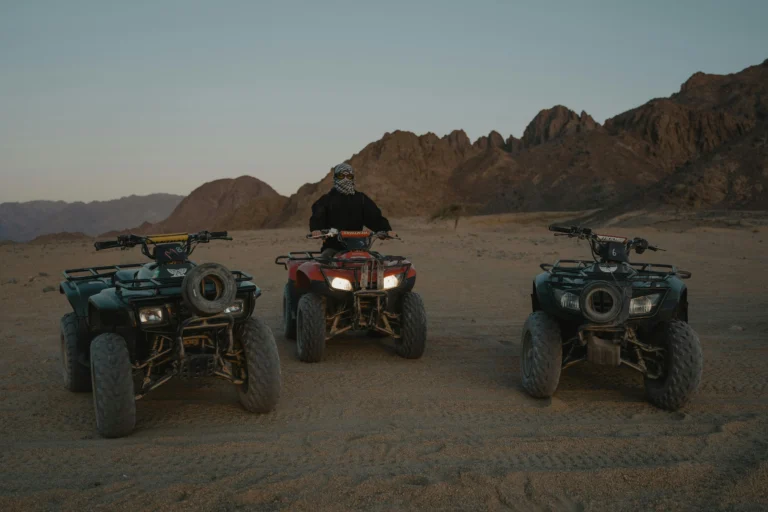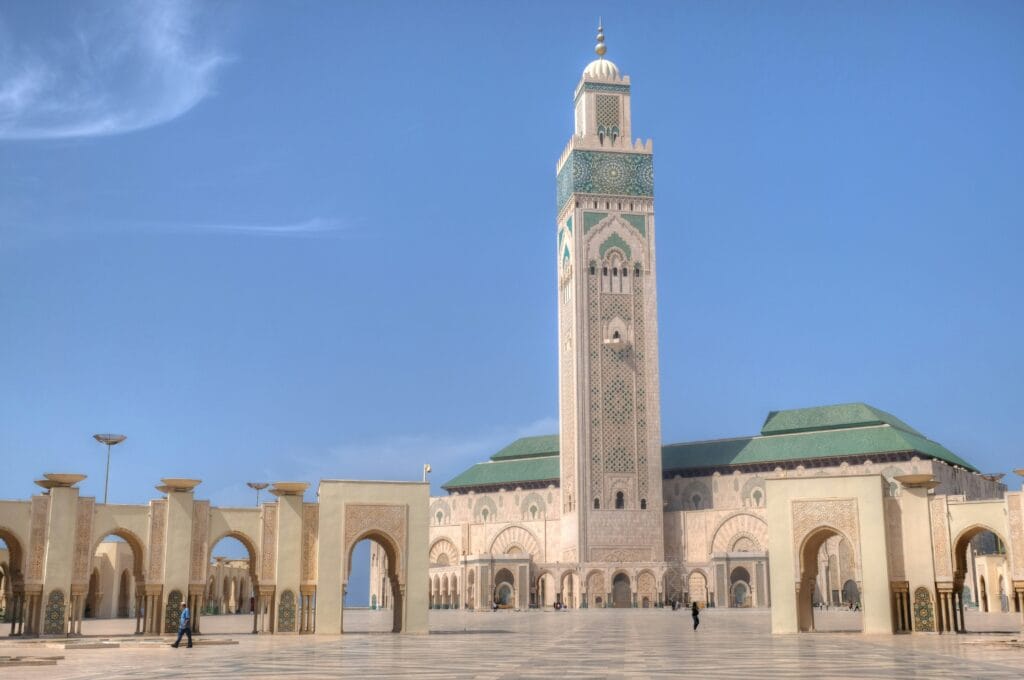
explore casablanca
explore casablanca: Welcome to Casablanca, the vibrant city at the heart of modern Morocco. Here, tradition and innovation come together beautifully. We’ll explore how this coastal city has grown from an ancient settlement to Morocco’s largest city and economic center. It’s now home to over 4.27 million people in the greater metropolitan area.
The city is rich in history and culture. It boasts landmarks like the magnificent Hassan II Mosque and the bustling Corniche Ain Diab. We’ll dive into the city’s vibrant energy. You’ll learn about its culinary scene, shopping spots, and nightlife, making it a top destination for travelers.
Casablanca is famous for its film noir classics. It’s also a modern hub for business and innovation. This city seamlessly blends its past with its present, attracting visitors from all over the world.
Table of Contents
The Evolution of Casablanca: From Ancient Settlement to Modern Metropolis
Exploring Casablanca’s evolution, we see a city shaped by its location and diverse culture. This is evident in its architecture, cultural practices, and urban landscape.
Ancient Origins and Early History
Casablanca’s history began in the 7th century as a small Berber settlement called Anfa. Its strategic location attracted invaders and settlers. By the 12th century, Anfa was a key port under the Almohad dynasty.
The city’s early years saw growth and destruction. In the 15th century, the Portuguese destroyed Anfa due to pirate activities. But by the 18th century, it was rebuilt and renamed Casablanca by the Alawite dynasty.
Portuguese and Spanish Influence
The Portuguese first influenced Casablanca, occupying parts of Morocco. Although they didn’t control it for long, their impact on architecture and culture lasted. Later, Spanish influence also shaped the city’s character.
The Spanish control over parts of Morocco added to Casablanca’s cultural mix. This blend is still seen in its architecture and food traditions.
French Protectorate Era and Urban Development
The French Protectorate era, starting in 1912, was a turning point for Casablanca. The French made it Morocco’s economic center, shifting power to coastal areas. Rabat became the administrative capital, and Casablanca’s growth accelerated.
Henri Prost, a renowned urban planner, designed Casablanca’s new layout. He created a European “ville nouvelle” separate from the traditional medina. This period saw major infrastructure growth, including the port and Art Deco architecture.
The French Protectorate brought modernization but also social divisions. The design of a separate “ville indigène” for Moroccans from other cities created lasting social impacts.
Casablanca’s journey from ancient settlement to modern metropolis shows its resilience and adaptability. It continues to embody Morocco’s spirit, blending tradition with modernity.
Casablanca as Morocco’s Economic Powerhouse
Casablanca is Morocco’s economic heartbeat, buzzing with industrial activity, financial transactions, and maritime trade. It has transformed into a modern economic hub, attracting businesses and investors worldwide.
The Port of Casablanca and Maritime Trade
The Port of Casablanca is a key player in Africa’s maritime trade. It handles a lot of Morocco’s imports and exports. This makes it a crucial link for trade between Europe, Africa, and the Americas.
Recently, the port has gotten better at handling big ships and more cargo. This has helped Casablanca grow as a major economic center. It supports industries like manufacturing, logistics, and distribution.
Financial District and Business Centers
Casablanca has a thriving financial district. It’s home to many banks and business centers. The Casablanca Stock Exchange is a big part of the financial scene, helping companies raise capital and investors to invest.
The financial district boasts modern buildings and facilities. This makes Casablanca a top choice for business travelers and investors. It has boosted the city’s economic status.
Industrial Development and Economic Impact
Casablanca’s industrial zones have changed a lot. They now include high-tech industries, aerospace, automotive, and textiles. This has created jobs for millions and helped grow the middle class.
The city’s growth has driven Morocco’s economy. Casablanca is a big part of the country’s GDP. Major companies from around the world are drawn to its location, infrastructure, and talent.
Casablanca’s influence goes beyond the city. It guides Morocco’s economic strategy and development. The film industry also sees its potential, using it as a location for many productions.
Iconic Landmarks of Casablanca
Casablanca’s landmarks are stunning and full of history.
Hassan II Mosque: Architectural Marvel by the Sea
The Hassan II Mosque is a standout landmark. It’s a masterpiece of modern Islamic architecture. It’s built on a cliff overlooking the Atlantic Ocean, showcasing Moroccan craftsmanship.
Visitors can take tours to see its details, including the tallest minaret in the world.
Mohammed V Square and Art Deco Heritage
Mohammed V Square is a historic spot. It shows off Casablanca’s Art Deco style. The square is surrounded by beautiful buildings from the colonial era.
People can walk around the square and enjoy the architecture. It’s a lively place to be.
Corniche Ain Diab: Casablanca’s Coastal Playground
Corniche Ain Diab is a stunning coastal boulevard. It offers a break from the city’s busy center. The promenade has sandy beaches and fancy beach clubs.
It’s a favorite spot for both locals and tourists. During the day, it’s great for families. At night, it turns into a cool place for nightlife.
The Corniche is one of Casablanca’s most photographed spots. It shows the city’s modern and diverse side. It’s perfect for taking memorable photos.
The Cultural Tapestry of Casablanca
The city’s culture is a mix of old traditions and new art. Casablanca’s culture is vibrant. It combines traditional Moroccan ways with modern city life.
Traditional Moroccan Elements in Urban Setting
Casablanca mixes traditional Moroccan culture with its city life. Visitors can see this by exploring historic neighborhoods. There, old riads and mosques meet modern buildings.
Traditional crafts like woodworking and pottery are still done here. They show Morocco’s rich craft heritage.
The Old Medina and Habous Quarter
Visiting the Old Medina and Habous Quarter gives insight into Casablanca’s history and culture. The Old Medina has narrow streets and traditional shops. The Habous Quarter shows Moroccan and French influences.
Going on a walking tour here lets you see the beautiful architecture and lively local life.
Museums and Cultural Institutions
Casablanca has many museums and cultural places. They show Morocco’s heritage and new art. The Villa des Arts is a top art museum. It has rotating shows of Moroccan and international artists.
The Museum of Moroccan Judaism is special. It’s the only Jewish museum in the Arab world. It preserves the Jewish community’s culture through artifacts and photos.
The Abderrahman Slaoui Foundation Museum has vintage posters and jewelry. It shows Morocco’s cultural change over time.
Cultural centers like L’Uzine and the Sacré Cœur Church are creative spaces. They show new works, have film screenings, and cultural events. They reflect Casablanca’s lively art scene.
Modern City Life in Casablanca
Casablanca is a city where old traditions meet modern life. This mix is seen in its architecture and city life. Historic and modern styles blend, making a unique urban scene.
Contemporary Urban Landscape
Casablanca’s cityscape is sleek and modern. It boasts wide boulevards and lively public areas. The skyline is marked by the Hassan II Mosque, one of the world’s tallest minarets.
Walking around, you see a mix of old and new. Modern malls and historic medinas coexist. This blend shows the city’s rich history and its forward-thinking spirit.
The city’s design shows its role as Morocco’s economic center. Boulevards like Boulevard Mohammed V are lined with cafes and shops. The Corniche Ain Diab offers stunning ocean views, perfect for both locals and tourists.
Lifestyle of Casablancans
Casablancans enjoy a fast-paced life. Their culture is a mix of Arabic, French, and international styles. The city offers many activities, from shopping to relaxing in hammams.
People here are proud of their city and its culture. They love exploring museums, galleries, and festivals. The city’s film industry adds to its cosmopolitan vibe.
| Aspect of Life | Traditional | Modern |
|---|---|---|
| Cuisine | Traditional Moroccan dishes like Tagine and Couscous | International cuisine in modern restaurants |
| Entertainment | Traditional Hammams and Medina exploration | Modern shopping malls and cinemas showing international films |
| Culture | Preservation of historic sites and traditional crafts | Cultural festivals and modern art galleries |
Expat Communities and International Influence
Casablanca has a large expat community. People from France, Spain, America, and Africa live here. They add to the city’s diverse culture.
Expats are drawn by job opportunities. They create neighborhoods with international restaurants and schools. This diversity influences the city’s development and culture.
International schools and cultural centers serve these communities. They also enrich life for locals. This exchange makes Casablanca a unique blend of old and new.
As a result, Casablanca is a welcoming place for people from all over. The film industry, with many international productions, has made it even more global.
Shopping Experiences in Casablanca
Casablanca’s shopping scene is as varied as its culture. You’ll find everything from luxury malls to traditional markets. It’s a place where modern meets traditional Moroccan craftsmanship.
Morocco Mall: Africa’s Shopping Destination
Morocco Mall is a top shopping spot in Africa. It has over 350 stores, from international brands to local boutiques. You can find fashion, home decor, and more.
The mall also has many dining options. From fine dining to casual spots, it’s great for a day out. The cinema complex is perfect for catching the latest movies.
Traditional Souks and Markets
For a traditional shopping experience, visit Casablanca’s souks and markets. The Old Medina and Habous Quarter are lively. They offer spices, textiles, and handicrafts.
Here, you can dive into local culture. Talk to vendors and enjoy the sights and sounds. It’s a great place for unique souvenirs or gifts.
Luxury Boutiques and Local Designers
Casablanca has luxury boutiques and local designers. Quartier Gauthier and Anfa have elegant stores. They feature international brands and Morocco’s celebrated designers.
Local designers mix traditional Moroccan craftsmanship with modern styles. They create unique clothing, jewelry, and home goods. The Casablanca Fashion Week showcases emerging talent.
Casablanca blends tradition with modernity in its shopping scene. It offers luxury brands, local handicrafts, and more. Whether you’re looking for something special or just want to explore, Casablanca’s shopping is unforgettable.
Casablanca’s Vibrant Nightlife and Entertainment
As the sun sets, Casablanca comes alive. Its nightlife is a mix of modern luxury and Moroccan charm. There’s something for everyone.
Beachfront Clubs and Lounges
Casablanca’s beachfront has stylish clubs and lounges. They offer Moroccan hospitality and international flair. It’s the perfect spot for a night out.
These places have live DJs and themed nights. The sound of waves and city lights make for an unforgettable experience.
Live Music Venues and Cultural Performances
Casablanca’s live music venues and cultural spaces showcase its rich heritage. You can enjoy traditional Moroccan music to international acts.
Attending a performance is a unique cultural experience. Many venues are architecturally stunning, making for great photo opportunities.
Rooftop Bars and Urban Nightspots
Casablanca is famous for its rooftop bars and urban spots. Sky 28 at the Kenzi Tower Hotel offers stunning views. It’s perfect for evening cocktails.
The city center and Gauthier neighborhood are trendy. They have bars and lounges where locals and creatives meet. These places serve innovative drinks that blend international and Moroccan flavors.
Culinary Journey Through Casablanca
Start a culinary adventure in Casablanca. Here, traditional Moroccan flavors meet modern twists. The city’s dining scene is a mix of Moroccan and international flavors, offering a unique experience.
Signature Dishes: Pastilla and Seafood Tajines
explore Casablanca: culinary identity is deeply rooted in traditional Moroccan dishes, among which Pastilla and seafood tajines stand out. Pastilla, a savory pie made with layers of flaky pastry, meat, onions, and spices, is a delicacy that showcases the complexity of Moroccan cuisine. Seafood tajines, on the other hand, highlight the freshness of the Atlantic seafood, slow-cooked in earthenware pots with a blend of aromatic spices.
For an authentic experience, we recommend trying these dishes at local restaurants that specialize in traditional Moroccan cuisine. Some of the best Moroccan restaurants in Casablanca include those that have been praised for their excellent reviews and commitment to preserving culinary heritage.
Street Food Culture
The street food scene in Casablanca is a reflection of the city’s vibrant culture and its people’s love for good food. From savory grilled meats to sweet pastries, the street food offers a quick and delicious way to experience the local flavors. Visitors can explore the bustling markets and food stalls to taste a variety of dishes that are both affordable and authentic.
Fine Dining and International Cuisine
Casablanca is also home to a sophisticated fine dining scene, where talented chefs are elevating Moroccan cuisine to new heights. Restaurants like Le Rouget de l’Isle and La Sqala are renowned for their refined takes on traditional dishes, presented with contemporary flair in elegant settings. These establishments are perfect for special occasions or romantic dinners, offering an intimate ambiance that makes them popular among locals and visitors alike, including couples celebrating their anniversary or a romantic evening out with their husband or wife.
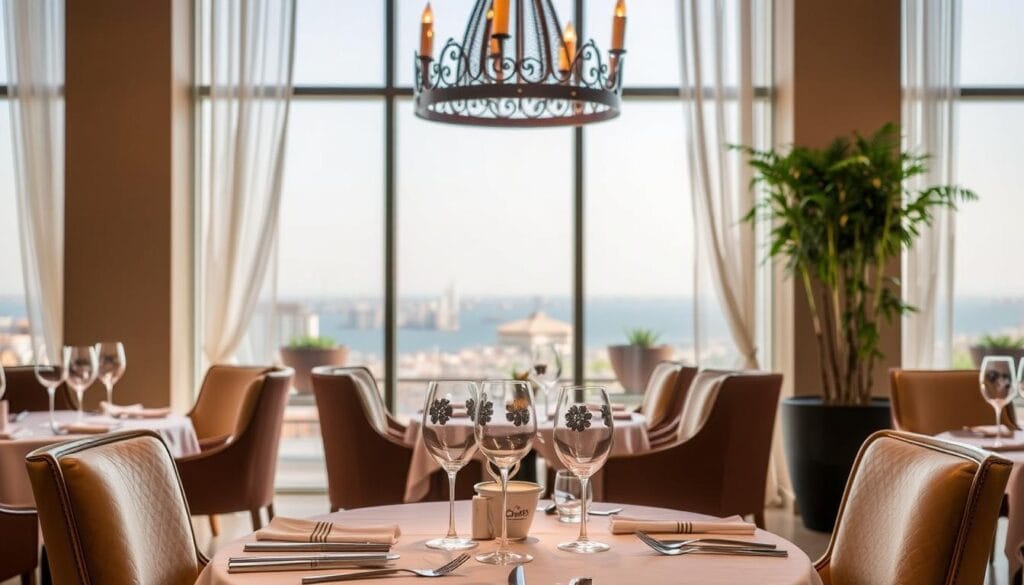
The city’s international dining options are impressively diverse, with authentic French bistros, Spanish tapas bars, Italian trattorias, and Asian fusion establishments. This global culinary scene reflects Casablanca’s openness to external influences and its position as a cosmopolitan city. Whether you’re in the mood for something familiar or adventurous, Casablanca’s dining scene has something to offer every palate.
Day Trips and Excursions from Casablanca
We invite you to explore the diverse landscapes and cultures just beyond Casablanca’s city limits. The city’s strategic location makes it an ideal base for discovering the rich history, vibrant culture, and breathtaking natural beauty of Morocco.
Coastal Escapes: El Jadida and Azemmour
The coastal towns of El Jadida and Azemmour offer a refreshing escape from Casablanca’s urban bustle. El Jadida, with its well-preserved Portuguese citadel, provides a glimpse into the region’s medieval past. The citadel’s walls and ramparts have witnessed many a historical scene unfold over the centuries.
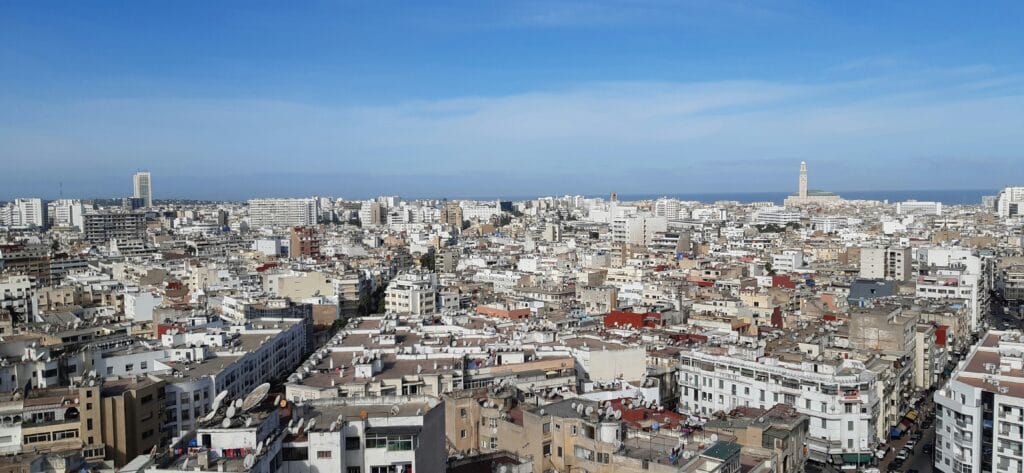
Azemmour, on the other hand, is a charming town with a rich cultural heritage. Its historic ramparts and traditional architecture make it a picturesque destination. Visitors can enjoy a leisurely stroll along the scenic riverbanks and explore the local artisan community.
Inland Adventures: Settat and Berrechid
Venture inland to discover the agricultural heartland of Morocco. Settat, the capital of the Chaouia-Ouardigha region, is known for its impressive Hassan I Mosque and vibrant weekly souk. The town offers a glimpse into traditional farming practices that have been sustained for hundreds of years.
Berrechid, another significant agricultural town, provides insights into Morocco’s farming traditions. The picture of wheat fields and olive groves stretching across the countryside is truly captivating. These landscapes change with the seasons, offering a unique experience depending on the time of year you visit.
- We invite you to venture inland from Casablanca to discover the agricultural heartland of Morocco, where rural towns and landscapes offer authentic experiences away from typical tourist routes.
- Settat welcomes visitors with its impressive Hassan I Mosque, vibrant weekly souk, and the opportunity to witness traditional farming practices.
- Berrechid offers insights into Morocco’s farming traditions and rural development, with scenes of wheat fields and olive groves creating picturesque landscapes.
- These inland excursions are particularly beautiful in spring when wildflowers carpet the countryside, or during harvest time when the fields buzz with activity.
- Local festivals celebrating harvests and cultural traditions occur throughout the year, offering visitors the chance to experience authentic regional celebrations.
Practical Information for Visitors
As you plan your trip to Casablanca, having the right practical information can make all the difference in enjoying your Moroccan adventure. We understand that navigating a new city can be challenging, so we’re here to guide you through the essentials.
Best Times to Visit and Weather Considerations
Casablanca enjoys a Mediterranean climate, characterized by mild winters and warm summers. The best time to visit is during spring (March to May) and autumn (September to November), when the weather is pleasant and ideal for exploring the city’s attractions. Summer can be quite warm, with temperatures often reaching above 86°F (30°C), while winters are generally mild, rarely dropping below 50°F (10°C).
If you’re planning to visit during the peak tourist season, which coincides with the film festivals and cultural events, booking your accommodations and flights well in advance is advisable. The city’s climate is also influenced by its coastal location, making the sea breeze a welcome respite during the warmer months.
Transportation Within and Around Casablanca
Casablanca offers various transportation options to suit different preferences and budgets. The city has a well-developed public transportation system, including buses and trams, which are efficient and affordable. For a more direct route, taxis are readily available, though it’s recommended to use the metered taxis to avoid any confusion over fares.
For those who prefer to drive, car rental services are available at the airport and throughout the city. However, be prepared for the bustling traffic that Casablanca is known for. Alternatively, ride-hailing services have become increasingly popular, offering a convenient way to get around.
If you’re planning to explore the surrounding regions, the train network connects Casablanca to other major cities in Morocco, making it an ideal option for day trips or longer excursions.
Accommodation Options for All Budgets
We invite you to choose from Casablanca’s diverse accommodation options that cater to every budget and travel style, from luxury international chains to boutique riads and affordable hostels. The city center and Gauthier neighborhood offer numerous upscale hotels with excellent amenities and service, including properties by Four Seasons, Sofitel, and Hyatt that consistently receive positive reviews from business and leisure travelers.
For a more authentic experience, consider boutique hotels in converted Art Deco buildings or traditional riads in the Old Medina, where you’ll feel more at home while enjoying distinctive Moroccan architecture and design. These unique accommodations not only provide a comfortable stay but also offer a glimpse into the local culture and history.
Budget-conscious travelers will find clean, comfortable options with international chains like Ibis and numerous locally-owned hotels that provide excellent value, particularly if you’re staying for an extended period of a month or longer. Many accommodations offer airport transfers and concierge services that can arrange guided tours, restaurant reservations, and day trips – making your Casablanca experience smoother and more enjoyable, much like a scene from a classic film. Whether you’re in Casablanca for business or leisure, the city’s accommodations are designed to make your stay memorable, much like the iconic film that the city is famous for.
The Future of Casablanca: Development Projects and Vision
The city of Casablanca is undergoing a significant transformation, driven by innovative development projects and a clear vision for the future. As we explore these initiatives, it becomes evident that Casablanca is on the path to becoming a model for sustainable urban development.
Casablanca Finance City and Business District
Casablanca Finance City (CFC) is a major development project aimed at establishing the city as a financial hub in Africa. The CFC is designed to attract international businesses and investments, creating a thriving business ecosystem. This initiative is expected to boost the local economy and create new opportunities for the city’s residents.
One of the key features of the CFC is its state-of-the-art infrastructure, including modern office spaces and amenities. The development is designed to be a catalyst for economic growth, making Casablanca an attractive destination for businesses and investors alike.
Sustainable Urban Planning Initiatives
Casablanca is also focusing on sustainable urban planning initiatives to address the challenges of urbanization. The city is implementing various projects to improve the quality of life for its residents while minimizing its environmental footprint.
Some of the initiatives include the development of green spaces, such as the renovation of the 25-hectare Arab League Park, and the implementation of new coastal protection measures. These projects not only enhance the city’s aesthetic appeal but also contribute to a healthier environment.
| Initiative | Description | Impact |
|---|---|---|
| Casablanca Finance City | Financial hub development | Economic growth, job creation |
| Arab League Park Renovation | Green space development | Environmental preservation, public recreation |
| Coastal Protection Measures | Environmental protection | Reduced erosion, enhanced biodiversity |
As Casablanca continues to evolve, we can expect to see more innovative projects that balance economic growth with environmental responsibility. The city’s commitment to sustainability is evident in its various initiatives, from public transportation expansion to eco-friendly building standards.
The future of Casablanca looks promising, with a clear vision for sustainable development and economic growth. As the city continues to transform, it is likely to become a model for other cities in the region.
Exploring Casablanca: Tour Options and Services
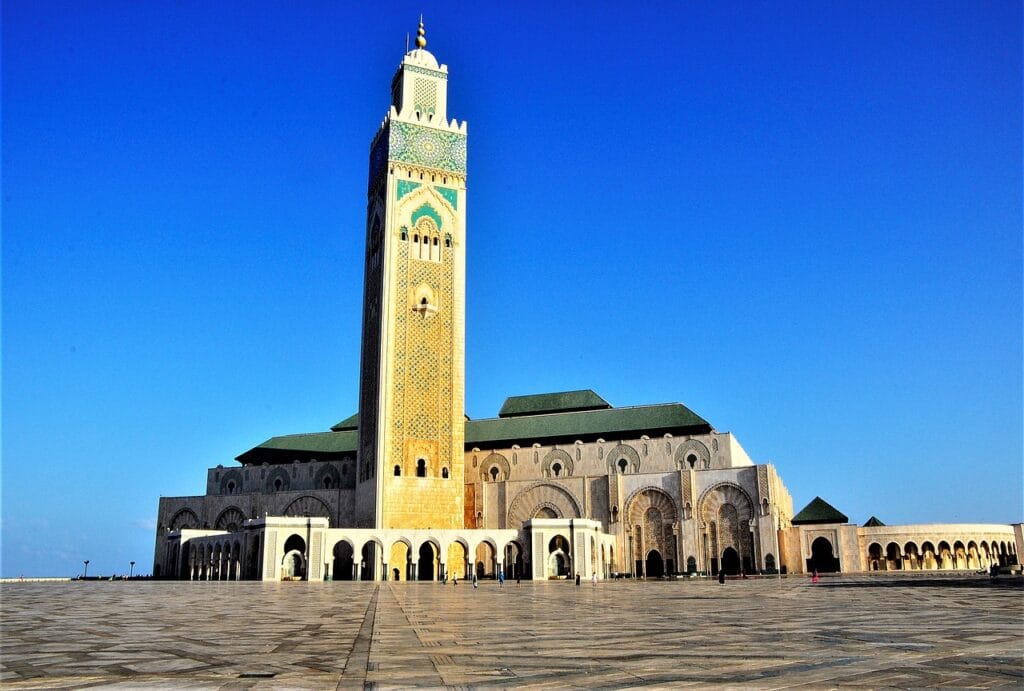
Book Now
Explore the hidden gems and iconic landmarks of Casablanca with our comprehensive tour options. We offer expertly guided tours through Explore Morocco that will help you discover the city’s highlights and hidden gems with expert local guidance.
Our professional guides are knowledgeable directors of your Casablanca experience, providing historical context, cultural insights, and personal stories that bring the city to life beyond what you’d discover on your own. Whether you’re interested in capturing the perfect picture or experiencing the city’s vibrant culture, we’ve got you covered.
For film enthusiasts, we can arrange unique tours that explore the city’s cinematic history. Photography enthusiasts will appreciate our specialized tours that focus on capturing the perfect picture of Casablanca’s most photogenic locations. For those seeking action and adventure, we can arrange surfing lessons, cooking classes, or behind-the-scenes visits to artisan workshops.
Contact us via WhatsApp at 06 81 22 38 60 or email at [email protected] to design your perfect Casablanca itinerary. Let us be your guide to an unforgettable experience in this vibrant city, inspired by the spirit of classic film adventures.
Casablanca Beyond the Movie: Separating Fact from Fiction
The iconic film ‘Casablanca’ has left an indelible mark on the city’s identity, but how much of it is fact and how much is fiction? We often find ourselves drawn to the romanticized version of Casablanca portrayed in the movie, but the reality is far more complex.
The movie, released in 1942, was entirely filmed on Warner Bros. Studios sets in California, with actors who never set foot in Morocco. Despite its enduring popularity, the actual city bears little resemblance to the misty, mysterious North African outpost depicted on screen.
| Aspect | Movie Portrayal | Reality |
|---|---|---|
| Rick’s Café | Iconic gathering place for refugees and resistance | No such place existed; a replica was opened in 2004 |
| City Atmosphere | Misty, mysterious, and exotic | Modern, dynamic metropolis with rich history |
| Historical Context | Captured wartime tension | Complex history of colonial influence and resistance |
While the film captured the wartime tension of the era, the real Casablanca has its own compelling history that’s far more complex than Hollywood’s fictional portrayal. Today, Casablancans embrace the movie connection with good humor, recognizing its role in putting their city on the global map.
Experiencing the True Heartbeat of Modern Morocco
We believe that the true spirit of Casablanca is revealed in its daily rituals and local interactions. To experience this vibrant city authentically, one must go beyond the iconic landmarks and immerse themselves in its everyday life.
Take part in daily rituals like sipping morning coffee at a neighborhood café or enjoying afternoon tea with mint and pastries. Evening promenades along the corniche offer a glimpse into the city’s natural pace and social patterns.
Engaging with locals beyond service interactions can be rewarding; Casablancans are generally open to conversation and proud to share their perspectives on their rapidly evolving city. Consider your visit to Casablanca as just the beginning of your Moroccan journey, providing valuable context for experiencing the country’s more traditional destinations.
The true essence of Casablanca lies in its role as Morocco’s forward-looking economic engine while maintaining connections to cultural traditions – a dynamic balance that makes it uniquely fascinating, much like a compelling film that continues to unfold. It’s part of the city’s charm that makes you want to be a part of it.
Conclusion
As we wrap up our tour of Casablanca, the city’s unique blend of tradition and modernity remains a lasting impression. We’ve guided you through Casablanca, from its ancient beginning to its position today as the beating heart of modern Morocco – a city that defies simple categorization and rewards curious travelers.
Whether you’re a solo adventurer, a couple seeking romantic experiences, or husband and wife traveling with family, Casablanca offers diverse attractions and experiences that can be tailored to your interests and pace. The city’s energy and character are unlike anywhere else in the country, making it an essential stop on any Moroccan itinerary.
Let us help you plan your perfect Casablanca experience through our services at Explore Morocco – contact us via WhatsApp at 06 81 22 38 60 or email at [email protected]. As you depart, you’ll take with you memories of iconic landmarks and a deeper understanding of Morocco’s complexity, much like the timeless appeal of the classic film that shares its name.
